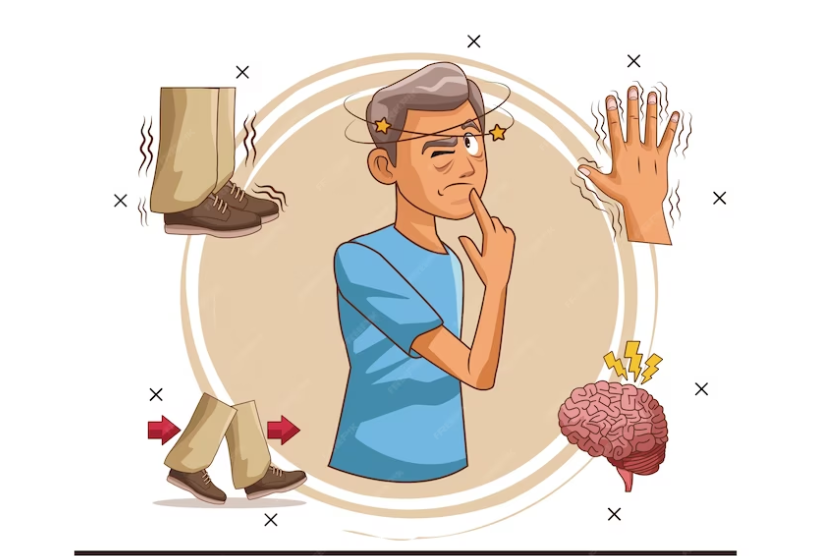
Understanding Parkinson’s Disease: A Simple Introduction
Introduction: Parkinson’s disease is a neurological condition that affects movement, causing symptoms that make daily tasks more difficult. Let’s explore Parkinson’s in simple terms to understand its effects and how to manage it effectively.
What is Parkinson’s Disease?
Parkinson’s disease is a progressive disorder that affects the nervous system. It occurs when nerve cells in the brain become damaged and stop producing enough dopamine, a chemical needed to control movement. Without sufficient dopamine, the body’s ability to move smoothly is affected.
Symptoms of Parkinson’s Disease
People with Parkinson’s disease may experience several symptoms that affect their daily lives:
- Tremors: Shaking in the hands, arms, legs, jaw, or head.
- Slow Movement: Difficulty starting or completing movements.
- Muscle Stiffness: Stiffness in the muscles, making movement difficult.
- Balance Issues: Trouble maintaining balance and coordination.
- Gait Changes: Walking may become slow, shuffling, or unsteady.
- Speech Problems: Voice may become softer, slurred, or monotone.
Causes of Parkinson’s Disease
The exact cause of Parkinson’s disease is still not fully understood. Researchers believe it results from a mix of genetic and environmental factors.
Age also plays a role, as most individuals are diagnosed after the age of 60. There are changes in the brain that contribute to the disease, which leads to a lack of dopamine.
Managing Parkinson’s Disease
While there is no cure for Parkinson’s disease, treatments can help manage symptoms. These may include:
- Medications: Drugs that increase dopamine levels in the brain.
- Physical Therapy: Exercises to improve movement and flexibility.
- Lifestyle Modifications: Regular exercise, a balanced diet, and stress management.
- Occupational Therapy: Strategies to help with daily activities and independence.
Living with Parkinson’s Disease
Living with Parkinson’s can be challenging, but with the right care and support, individuals can lead fulfilling lives. It’s important to stay informed, maintain a positive outlook, and work closely with healthcare providers to find a treatment plan tailored to the individual’s needs.
Conclusion
Parkinson’s disease affects movement and can significantly impact daily activities. Understanding its symptoms, causes, and management options is key for those living with the disease and their caregivers. With proper treatment and support, it’s possible to live well and maintain a high quality of life.
To seek medical advice, always consult a Doctor. Here are our recommended experts. Click here
To read more on Neurological Disorders.



